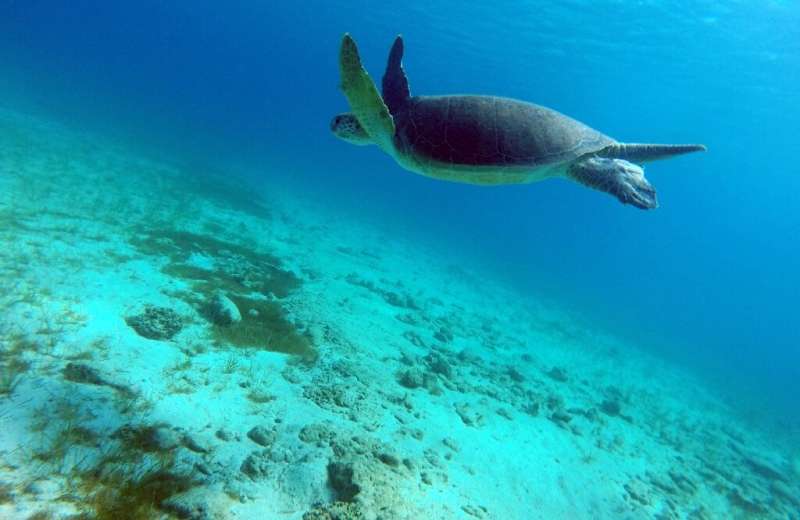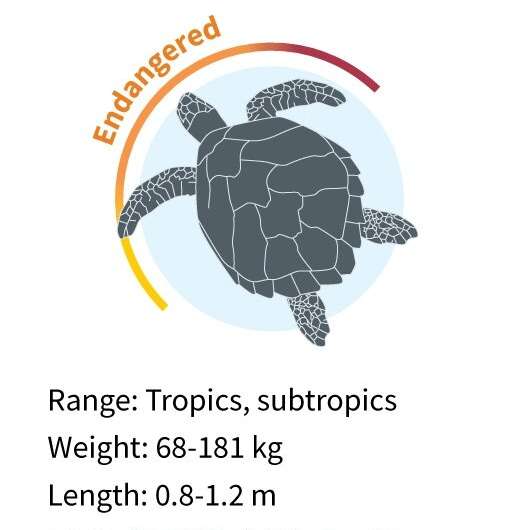Aussie scientists turn to drones to protect sea turtles

Australian researchers have discovered they were underestimating numbers at the world's largest sea turtle nesting site after turning to drone technology for the first time.
Raine Island, off the northern tip of Australia, plays host to around 60,000 female green turtles who migrate hundreds of kilometres from the Great Barrier Reef to lay their eggs each year.
Scientists working to protect the endangered species had struggled with how best to keep track of the nesting turtles, but revealed in a paper published in peer-reviewed journal PLOS One last week that their new use of drones showed they had been underestimating numbers by more than 50 percent.
Stunning drone footage released by the Great Barrier Reef Foundation on Tuesday shows thousands of turtles swimming in the crystal blue ocean.
The researchers had previously counted turtles as they landed on the beach to lay eggs—with about 23,000 counted in a single night—and by marking the creatures with non-toxic soluble paint to more easily track them in the ocean.
"Trying to accurately count thousands of painted and unpainted turtles from a small boat in rough weather was difficult," the paper's lead author Andrew Dunstan said.

"Using a drone is easier, safer, much more accurate, and the data can be immediately and permanently stored."
Their work, as part of the Raine Island Recovery Project, also includes rebuilding the remote cay's nesting beaches and constructing fences to prevent turtle deaths.
Journal information: PLoS ONE
© 2020 AFP





















